Last Updated on February 16, 2025 by Karen
Discover the key differences between döner and gyro, two beloved street foods, including their origins, cultural significance, and variations.
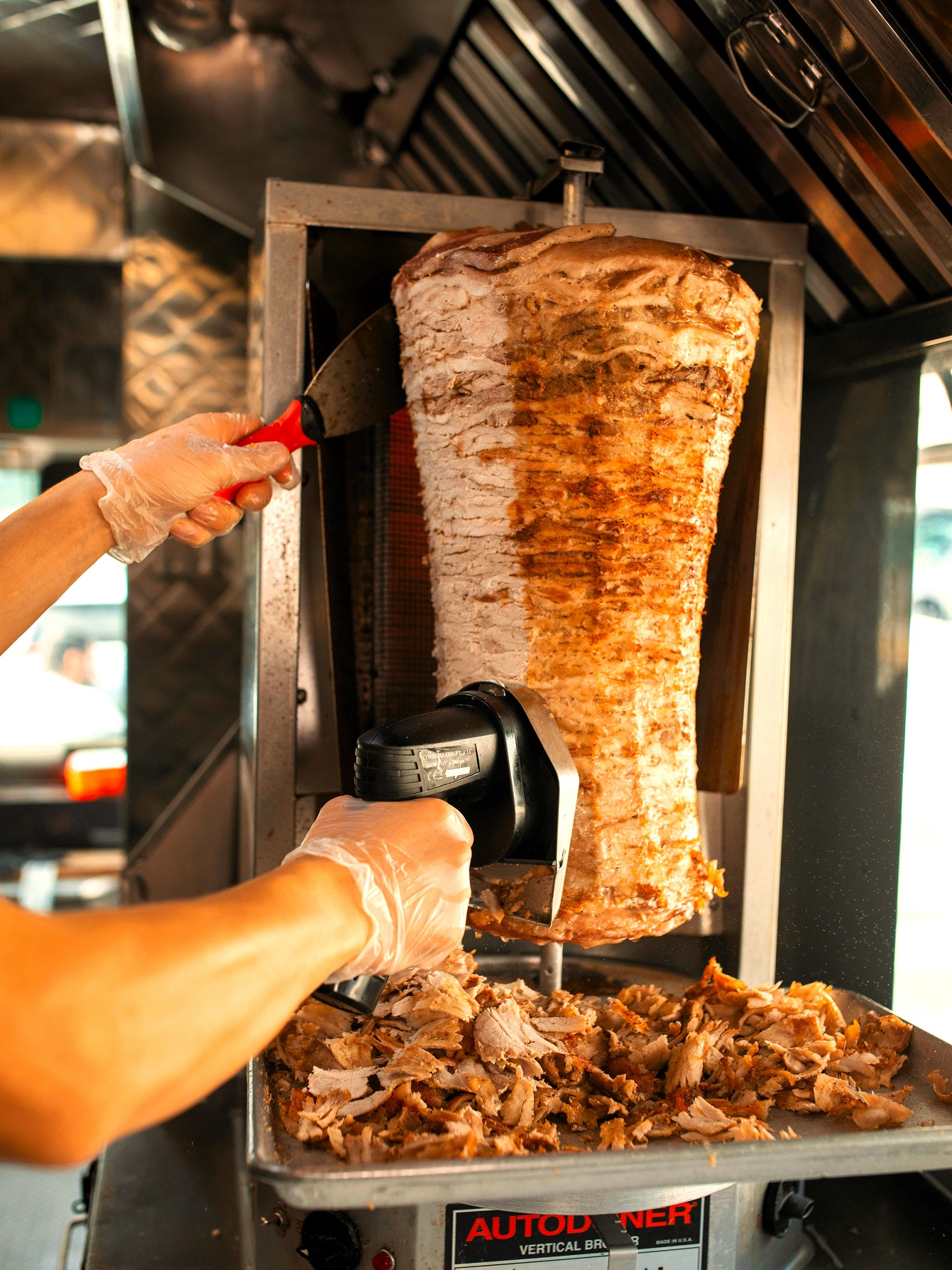
If you’ve ever found yourself at a food truck, a street corner, or inside a bustling restaurant craving something savory, chances are you’ve come across the delicious options of doner and gyro. These beloved dishes are staples in many parts of the world, but they each come with their own unique cultural background, flavors, and preparation techniques. Though they share similarities—particularly their use of meat cooked on a vertical rotisserie—there are key differences that set them apart.
In this post, we’ll go over the rich history, ingredients, and cooking methods behind doner kebab and gyros to help you understand the main differences and what makes each dish so special.
Origins and Cultural Heritage of Doner Kebab
The doner kebab has a deep connection to Turkish cuisine and has its roots in the Ottoman Empire, dating back to the 19th century. The word “döner” comes from the Turkish verb dönmek, meaning “to turn” or “rotate,” which perfectly describes the way the meat is cooked on a vertical rotisserie or spit. The tradition of cooking meat in this way started in Turkey, where lamb, beef, and chicken were stacked on a rotating spit, and as it slowly turned, the outer layers of meat cooked to perfection, creating a tender and crispy texture.
The dish’s origins are attributed to a Turkish chef named Iskender Efendi, who is believed to have invented the vertical spit cooking method in the late 19th century. Over time, this cooking technique became widely popular across Turkey and the Middle East. It didn’t take long for doner kebab to spread to other parts of the world, especially after Turkish immigrants brought the dish to Germany in the 1970s, where it quickly became a staple of fast food culture in Europe.
While doner kebab is a beloved part of Turkish cuisine, it has become a major street food in many countries, particularly in Germany, the United Kingdom, and the United States. It’s commonly served in pita bread or flatbreads, alongside fresh vegetables like tomatoes, onions, and lettuce, and it’s often paired with various sauces such as yogurt-based garlic sauce or cucumber sauce.
The dish’s popularity has led to the creation of many regional variations, making it a global street food phenomenon. In Turkey, it is often enjoyed as a standalone meal, but it has evolved in different parts of the world, with places like Germany serving it with French fries wrapped inside the sandwich, and in the United States, it’s typically served as a quick fast food meal in cities with large Turkish and Middle Eastern populations.
In addition to being a fast food favorite, doner kebab carries significant cultural importance in Turkey, where it’s more than just a meal—it’s a part of national heritage, representing the rich flavors and cooking traditions of the region.
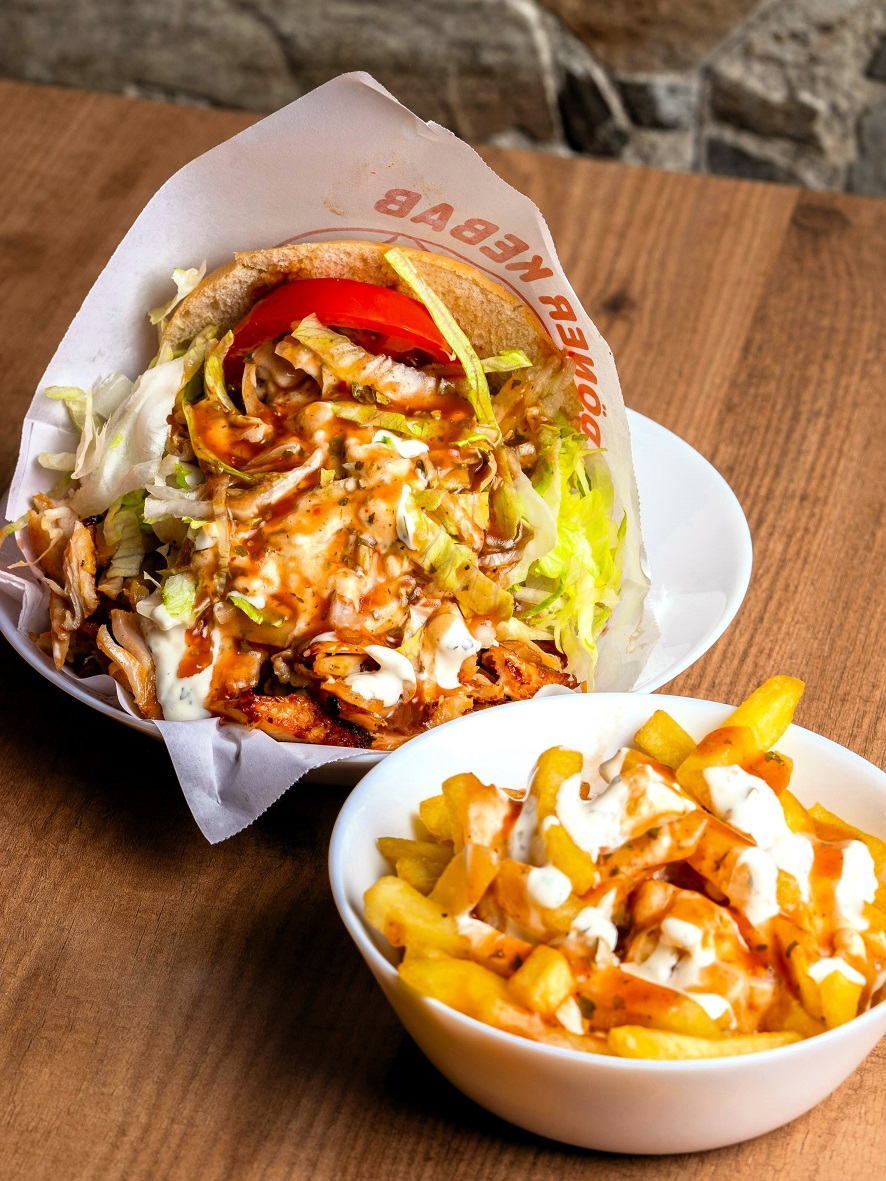
Origins and Cultural Heritage of Gyro
The gyro is a quintessential part of Greek cuisine and has deep historical roots that trace back to the Middle Eastern shawarma. The word “gyro” itself comes from the Greek word gyros, meaning “turn” or “rotate,” which refers to the method of cooking the meat on a vertical rotisserie. The cooking technique of grilling meat on a rotating spit was brought to Greece by immigrants in the early 20th century, influenced by the Ottoman Empire’s culinary traditions.
The origins of the gyro can be traced back to the early 1920s when Greek immigrants in the United States adapted the shawarma method to create a distinctly Greek version. The shawarma, which is a traditional Middle Eastern dish made from spiced meat such as lamb, beef, or chicken cooked on a vertical spit, served as the inspiration for the gyro. The adaptation involved using pork (the most common meat in Greek gyros), though lamb and chicken are also popular choices. The combination of Greek spices like oregano, thyme, and garlic, along with the method of grilling the meat on a vertical spit, set the gyro apart from its Middle Eastern predecessor.
The gyro quickly became a staple of Greek street food, beloved for its affordable price, delicious taste, and portability. It was especially popular in Greece during the post-World War II period when the rise of food trucks and street vendors made it an accessible meal for people on the go. Gyros are traditionally served in pita bread, accompanied by fresh toppings like tomato, onion, and feta cheese, and, of course, the iconic tzatziki sauce—a tangy blend of Greek yogurt, cucumber, garlic, and herbs.
Gyros hold a significant place in Greek culture, reflecting the nation’s rich culinary heritage and its longstanding connection to the Mediterranean. It is more than just a street food; it’s a meal that brings people together, whether enjoyed during a family gathering, at a local tavern, or on the streets of Athens. As the dish spread worldwide, especially in places with large Greek or Middle Eastern populations like the United States, it became a beloved symbol of Greek food culture.
Today, gyros are found in countless fast food joints and restaurants around the world, from New York City to Nova Scotia, and have become a global phenomenon. They continue to evolve, with different regional variations and creative twists, such as the popular chicken gyro and the addition of french fries inside the pita, making it even more filling and delicious.
In summary, the gyro has become more than just a Greek dish—it is a beloved and iconic food with a rich cultural heritage, serving as a symbol of Greek cuisine around the world. Whether you’re enjoying one in a local Greek diner, at a great gyro spot, or tiktok-making your own at home, the gyro remains a celebrated street food that continues to capture the hearts of food lovers globally.
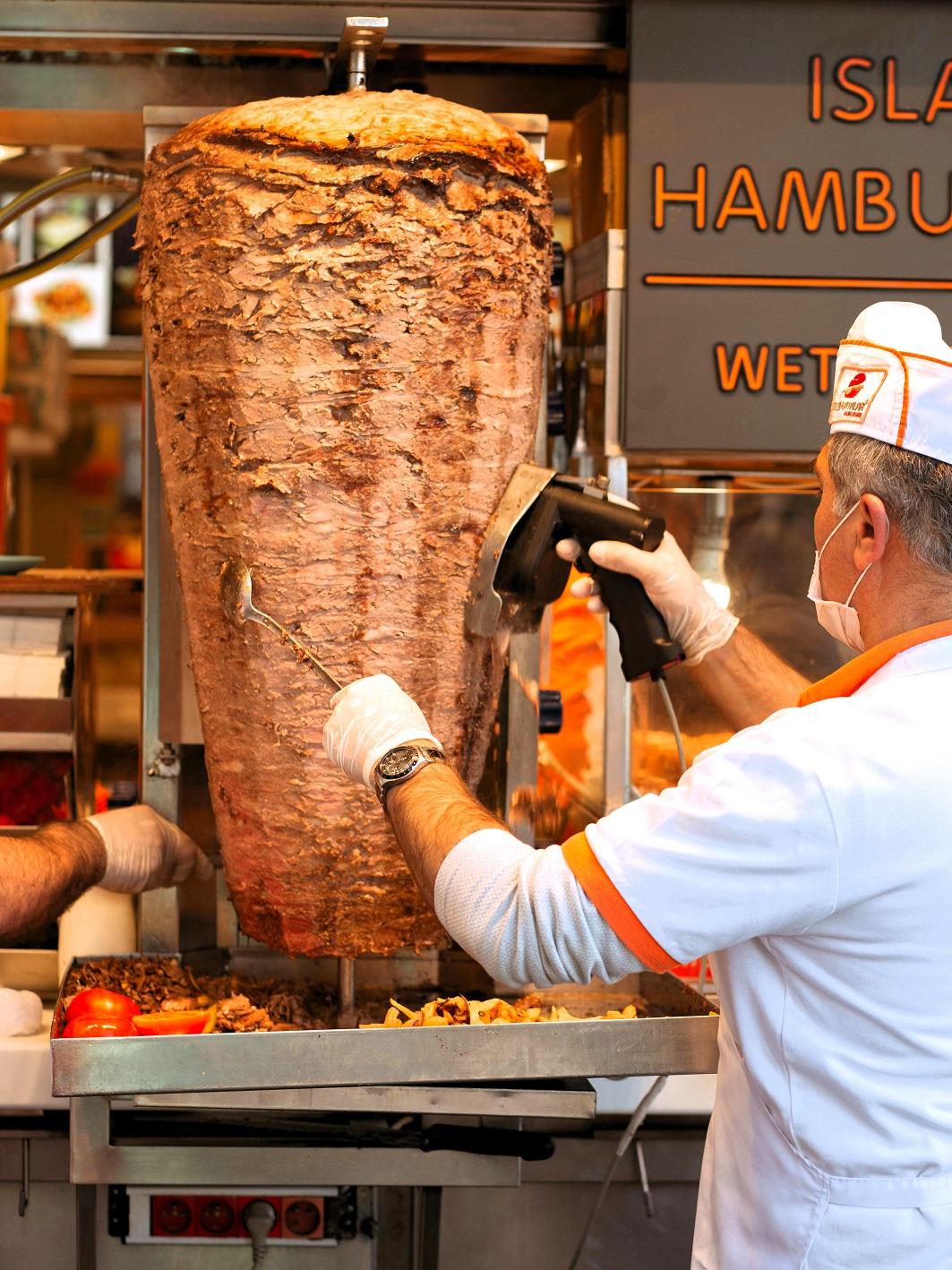
Cooking Method: Vertical Rotisserie vs. Open Flame
Doner Kebab
The preparation of doner kebab revolves around the use of a vertical rotisserie or rotating spit, which allows the meat to cook slowly, creating an outer layer of crispy, flavorful meat as it turns. The meat is often stacked in layers on the spit, and as the outer layer cooks, it’s shaved off in thin slices and served with fresh vegetables like tomatoes, cucumbers, and red onions. The rotisserie allows for the meat to cook evenly, producing tender, juicy slices that are full of unique flavors.
Gyro
Similarly, gyros meat is cooked on a vertical spit, but the method differs slightly. Gyro meat is often a combination of ground lamb, ground beef, or chicken meat, which is pressed into a large cone-shaped stack before cooking. The open flame or rotating spit crisps the outer layer, which is shaved off in thin slices. The gyro meat is usually marinated with garlic, oregano, and a variety of other Greek spices. The traditional cooking process gives the gyro its signature crispy, tender texture that is so satisfying when paired with the fresh, creamy tzatziki sauce and veggies.
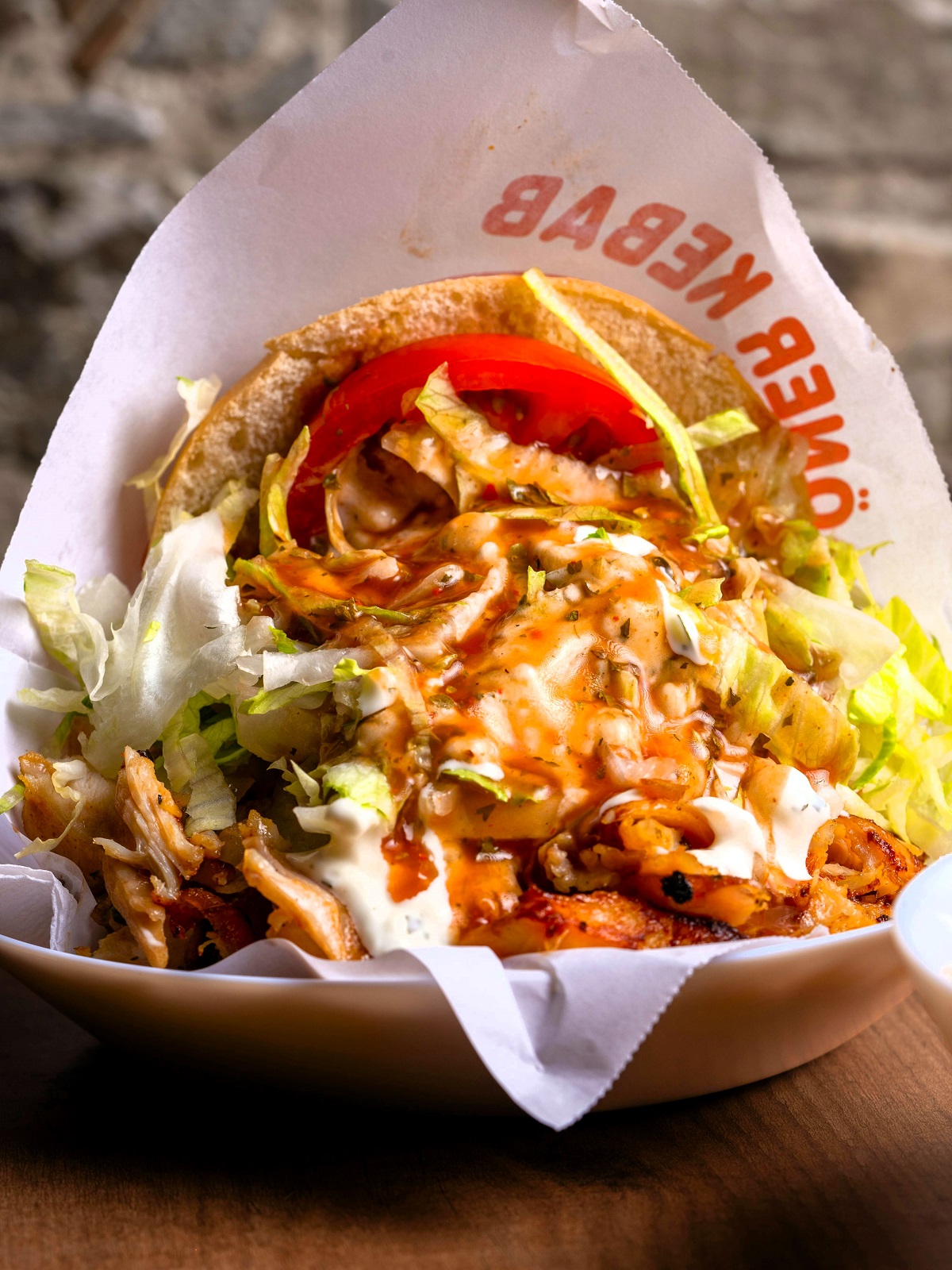
Flavor Profile and Sauces
Doner Kebab
Doner kebabs are typically served with a rich garlic sauce, yogurt-based sauce, or sometimes even a cucumber sauce to complement the flavorful meat. These sauces balance the spices in the doner and provide a refreshing contrast to the savory, juicy meat. You’ll often find french fries or tomato sauce served alongside or inside the pita, adding an extra layer of flavor and texture.
Gyro
Tzatziki sauce is the signature accompaniment for gyros. Made with Greek yogurt, cucumber, and garlic, tzatziki adds a tangy and cool element that pairs perfectly with the spiced gyro meat. Additional toppings like feta cheese, red onion, and fresh tomatoes bring an extra burst of flavor to the dish, highlighting the Mediterranean influences of the gyro. Some gyros might also be drizzled with a bit of lemon juice for a zesty kick.
Serving Styles and Variations
Doner Kebab
Doner kebabs can be served in a wrap, sandwich, or even over rice in a bowl. Pide bread or flatbread is often used to wrap the meat and toppings, though pita bread is another common option. Doner kebabs may also come with extra ingredients like olives or pickled vegetables, depending on the region. Whether served as a doner kebab shop takeout item or at family gatherings, the dish is a beloved fast food and is enjoyed in many great places around the world.
Gyro
A classic Greek gyro is usually served in warm pita bread with a combination of fresh vegetables, tzatziki sauce, and sometimes french fries or feta cheese. The gyros meat is shaved off the rotating spit in thin slices and placed inside the pita, making it easy to eat on the go. Whether you’re at a great gyro spot in Nova Scotia or enjoying one in the heart of Greek culture, gyros are widely recognized for their cultural significance and their ability to bring people together over delicious, flavorful meat.

Doner vs. Gyro: Key Differences
The key differences between döner kebab and gyros come down to their origin, types of meat, and flavor profiles. Doner kebabs often feature lamb, beef, or chicken and are spiced with a rich blend of spices from Turkish cuisine, while gyros are traditionally made with lamb, pork, or chicken and are seasoned with Greek herbs like oregano and thyme. Tzatziki sauce is a signature gyro topping, while doner kebabs may be topped with garlic yogurt or other sauces.
Both dishes are beloved in their respective countries and around the world, with döner kebab often being the fast food of choice in New York City and gyros being a beloved street food in Greece and beyond. Whether you prefer the rich heritage of a Turkish doner or the zesty Greek culture of a gyro, both dishes offer a unique experience for your taste buds.
Similar Dishes: Shawarma, Tacos Al Pastor, and More
Doner kebab and gyro share a similar cooking method and many of the same ingredients, but there are other similar dishes that use the rotating spit method of cooking. Shawarma from the Middle East, for example, is made from lamb, beef, or chicken meat cooked on a vertical spit and served in a wrap. Tacos al Pastor, a Mexican dish, is also made from marinated pork meat cooked on a vertical spit and served with pineapple and onions. Each of these dishes shares similar cooking methods and often includes spices and fresh vegetables, making them favorites in their respective regions.
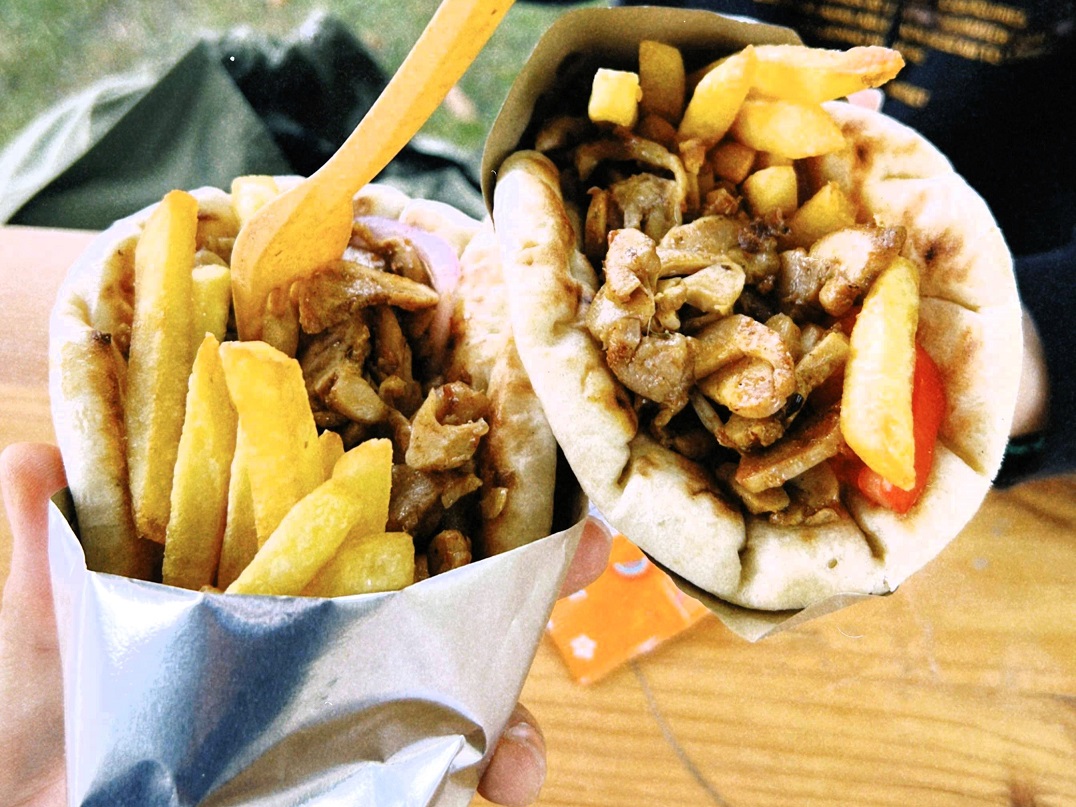
Which One is Better: Doner Kebab or Gyro?
When it comes to deciding which dish is superior, the answer is often subjective and based on personal preference, but there are some key factors to consider. Gyros are typically more focused on Greek spices, offering a sliced meat that is paired with refreshing ingredients like tzatziki sauce, tomato, and red onion. If you’re in the mood for something fresh with creamy yogurt and a hint of garlic, Greek gyros may be the way to go, especially if you’re craving chicken gyro or pork options.
On the other hand, doner kebab offers a more complex array of flavors with its Turkish dish origins. Doner kebabs often use a combination of ground meat or lamb, and the slices of meat are seasoned with a rich blend of spices like cumin and paprika. If you’re in the mood for something with a more Middle Eastern seasoning profile or if you’re trying it for the first time, the döner kebab might win you over.
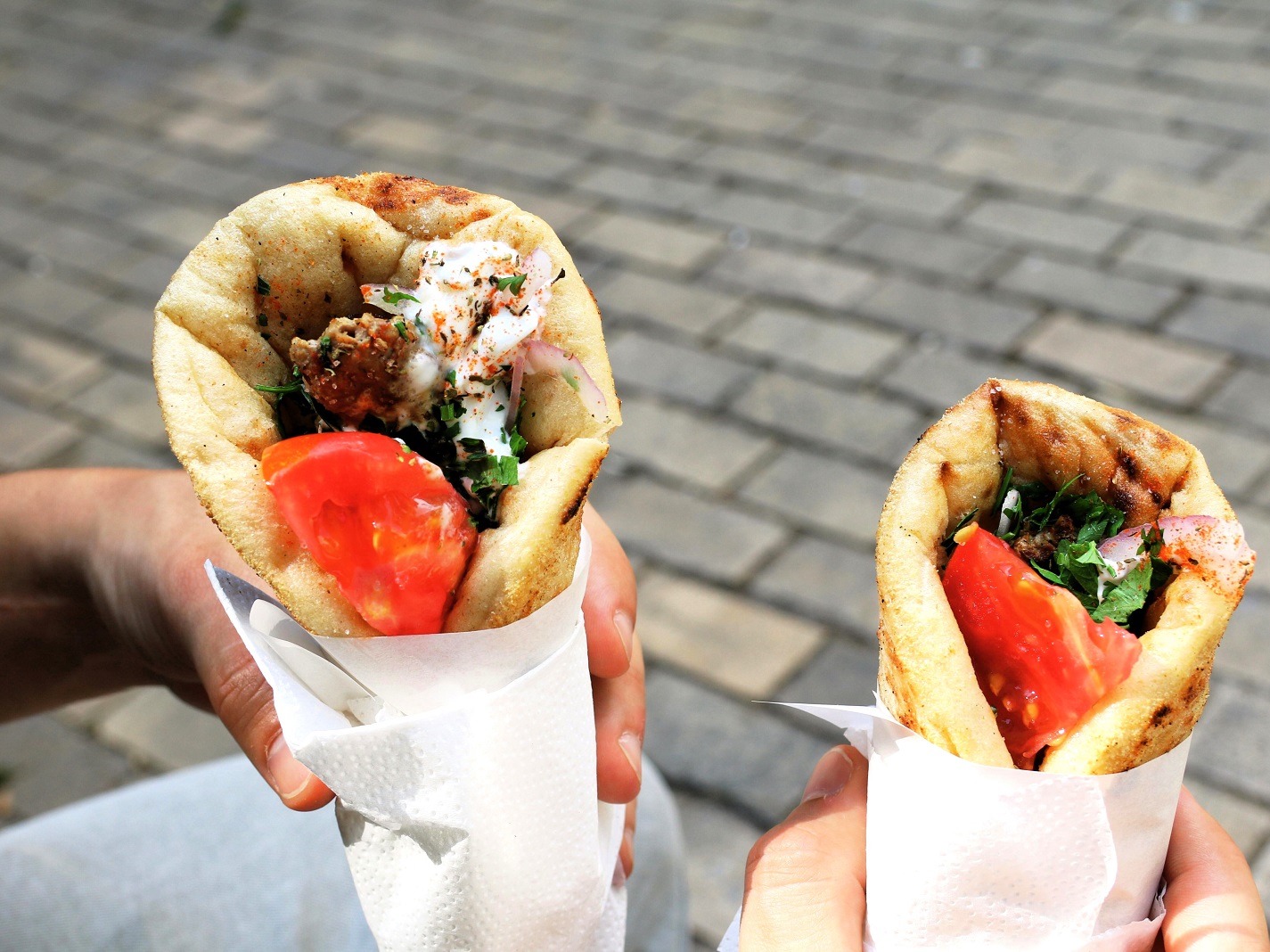
One of the main differences between the two dishes also comes down to serving style. If you love open fire cooking or the rotating spit style of meat preparation, döner kebab may feel like the right choice. However, if you’re craving a dish that combines sliced meat with feta cheese and the coolness of garlic sauce, then gyros are a strong contender.
Ultimately, the decision between a donner kebab or gyro is up to you! Both are great places to start if you’re diving into beloved street food that holds cultural importance in their respective regions. Why not try them both and see which dish takes the special place in your heart? Whether you’re sharing a gyro at George’s Gyros spot or the famous Halal Guys, or enjoying a casual night in with a turkish doner kebab, both are dishes that celebrate culinary traditions and the joy of good food.















